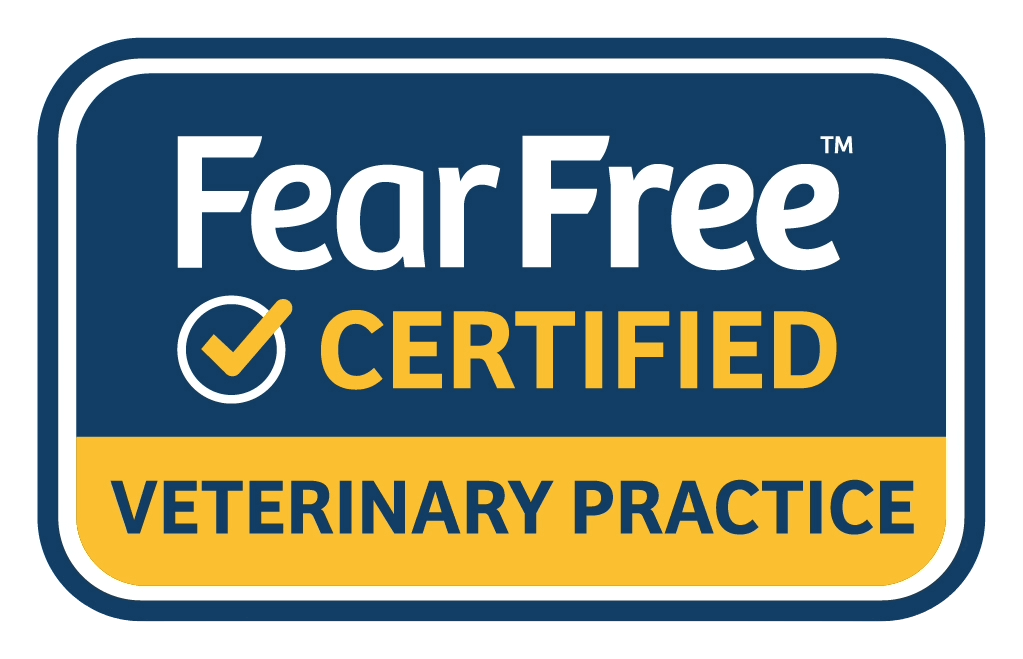As a whole, our family pets are living longer and healthier lives. As our pets age, they develop very similar age-related diseases as we do. One of the most common diseases in aging dogs and cats is osteoarthritis, also known as degenerative joint disease (DJD). Osteoarthritis is a slow erosion of the cartilage that lines the joints. As this cartilage erodes, bone rubs on bone and inflammation develops. As the disease advances, boney points (osteophytes) develop in the joint. We can see this on X-rays of the affected joints. Veterinarians are faced with managing the chronic pain and we want you to help recognize the problem and know of all the options for managing this painful disease.
Recognizing chronic pain in pets
Pain in pets is often difficult to recognize because they are naturally inclined to hide their pain so that they don't draw attention to their weakness. But as osteoarthritis advances slowly, the signs of pain may be subtle, but constant. In order to help determine if your pet may be suffering in silence, look for these signs at home.
Recognizing Joint Pain in Dogs
Dogs may have more reluctance, or need assistance, to jump up onto a favorite chair, into bed, or up into the car. They may also hesitate or struggle to use the stairs, are slow to rise or lie down, may become more aggressive (snippy), may limp after rest, and some will sleep more to deal with their pain.
Recognizing Joint Pain in Cats
Cats are inclined to sleep and hide more, may be unable to get into their litter box because it hurts to step over the high sides resulting in elimination in odd places. They may have trouble jumping as high, may not groom themselves as well, or may try to bite when a tender spot is petted. They may hesitate at the bottom or top of stairs and move on the stairs slowly with low tail.
Pet parents can be a huge help in assessing subtle signs of pain in their pets. You know your pet's normal behavior and can pick up on any changes. If you think “well, they’re just getting old,” you might be missing out on a better life for your pets. If you note any of the above signs and have not taken them to see your veterinarian recently, now is the time to schedule an appointment. As medicine continues to advance, veterinarians have more therapies than ever to help your pet live a more comfortable life.
Management of Osteoarthritis in pets
A multimodal (using several methods or medications) approach to managing chronic joint disease is currently the most effective and safest way to manage a pet's pain. Often focusing on only one therapeutic method will not be as helpful as doing many at the same time.
1. Maintaining Lean Body Weight
First, get your arthritic pet to their optimal weight. Pets that are overweight have more stress on their joints and it will exacerbate their pain. Talk to your veterinarian about weight loss diets and strategies to get your pet to a more ideal body weight. By far, this is the healthiest step you can take and involves no medications.
2. Moderate Exercise
Moderate exercise is encouraged. Pain can increase with inactivity so exercise is encouraged to help reduce weight but also to keep the joints moving.
3. Joint Health Supplements
Oral joint health supplements have flooded the pet care marketplace. However, only a few have been scientifically studied and proven effective for your pet's joint health. Some veterinary favorites are made for both dogs and cats, including "Cosequin", "Dasuquin" and "Dasuquin Advanced" which are made by the company Nutramax.
4. Omega Fatty Acids
Fatty Acids (omega-3 Fatty Acids) supplemented in higher concentrations than is naturally found in premium pet food will provide more anti-inflammatory benefits for joints and are a natural pain reliever. The source of the EPA and DHA (which are types of Fatty Acids) is important, as not all fatty acids are created equal. Fatty Acids from deep water renewable ocean source have been found to have the highest potency. Brands that are known to be excellent quality are Bayers' "Free Form Fatty Acids" and Nutramax's "Welactin."
Microlactin is a patented dried milk protein found in a supplement called "Duralactin," which is derived from hyperimmunized cows. This protein also has anti-inflammatory benefits and studies have shown that dogs and cats can safely take this supplement for control of pain associated with chronic inflammation. It can also be safely added to other forms of treatment for more comprehensive benefits.
5. Adequan Injections for Dogs
Adequan is an injectable, joint disease modifying, product that slows cartilage damage, stimulates cartilage repair, and helps to increase the lubrication of joints. Adequan has been shown to be most effective when started during the beginning stages of arthritis, but can be effective at more advanced stages as well. Adequan can be used safely in both cats and dogs.
6. Solensia Injections for Cats
A new product, called Solensia, is available to treat cats with osteoarthritis and has been proven to be very effective in providing relief. Solensia injections are administered once monthly at our office.
7. Non-steroidal Anti-inflammatories (NSAIDs)
Non-steroidal anti-inflammatories (NSAIDs) are admittedly the most therapeutic class of medications for our arthritic dogs. These medications are made to control pain directly. Some of the more commonly known dog NSAIDs are "Rimadyl" (carprofen), "Metacam" (meloxicam), Previcox (firocoxib) and "Deramaxx" (deracoxib). The most commonly known NSAID for cats is "Onsior". Giving drugs to your pet that you would take for inflammation or arthritis isn’t recommended. Do not give human pain relievers (i.e. Aspirin, Tylenol, or Advil) to your pet. Many of them are not safe and can potentially have life threatening side effects.
Arthritic pain is a common concern for a lot of pet parents. You don't have to let your pet suffer. Please start a conversation with us. We are here to help!
Noël Lucas, DVM


